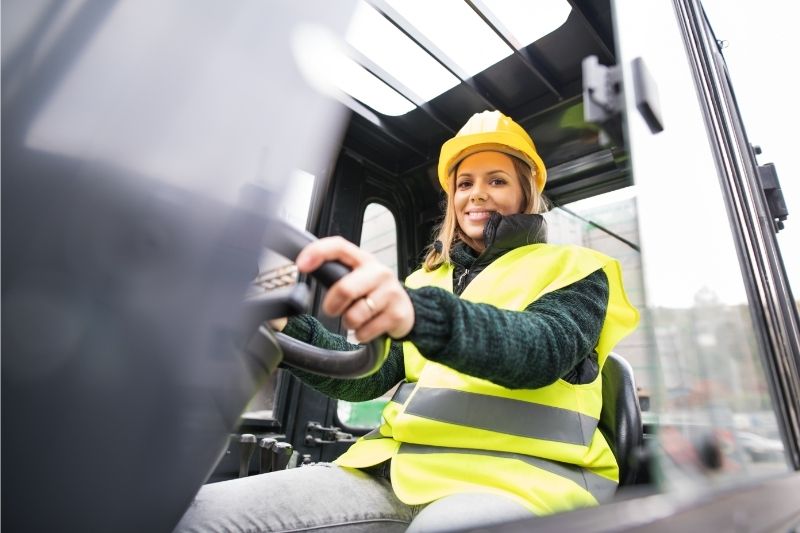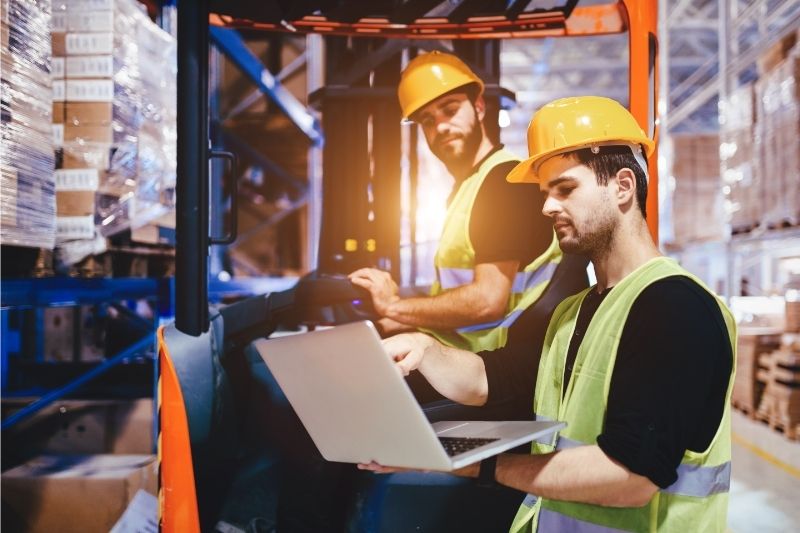Have you ever wondered about some of the key forklift safety rules and operating procedures you should be following in your business?
This is something that is critical for all businesses, irrelevant of their specific niche; with this in mind, today, we’re looking at the most vital forklift safety rules and operating procedures you must follow to keep your premises safe and secure in both the short and long-term perspectives.
17 Forklift Safety Regulations You Must Adhere To
Forklifts offer a hugely important solution for many construction projects and business premises. However, they can also be highly dangerous pieces of equipment if safe forklift operation isn’t prioritised.
In fact, as warned by Verge Safety Barriers, the number of injuries due to forklift use in Australia can be as high as 10,000 cases per year; meanwhile, approximately 104 fatal injuries were suffered by September 2020 due to unsafe forklift use.
So, please don’t let this be the case for your business; always ensure forklift safety remains paramount at all times to keep your business operating efficiently.
Luckily, the following tips can be excellent ways to work towards safer forklift operations within your business.
Make sure you’ve implemented as many of these forklift safety tips as possible for best results; it could make a significant difference for your firm.
#1 All Forklift Operators Must be Trained
This is as much a forklift safety tip as it is a legal requirement.
Indeed, before your staff can legally operate a forklift, they must have obtained a relevant forklift operating license to ensure safe forklift operation on the business premises.
This is something your business must never compromise on, even if your normal licensed forklift drivers have to take unexpected time off.
In such a scenario, reach out to a team such as ours here at Fast Labour Hire instead; we can help you find professional, licensed forklift operators to provide cover for your team.
#2 Ensure Forklift Drivers and Regular Workers Have Separate Working Areas
A second key tip is to ensure that forklift drivers and regular workers have separate working areas, wherever possible.
This simple change limits ground workers’ chance to come into contact with forklift machinery. And, if they’re not in contact with forklifts, the chances of forklift accidents due to poor forklift safety are dramatically reduced.
#3 Ensure All Workers Have Appropriate Protective Clothing

Sometimes, accidents happen. However, ensuring that your business’s staff members have protective clothing – such as hard hats and gloves – can help reduce the risk of damage and injury on the premises.
In addition, as recommended by Health & Safety Training Limited, tight-fitting clothing safety equipment without loose material to get caught is also of high importance for on-site forklift safety.
#4 Don’t Disregard the Importance of Hi-Vis Gear
Protective clothing is crucial in case of accidents; however, prevention is always better than the cure.
With this in mind, ensuring your team has vibrant hi-vis gear is a good way to ensure that your forklift operators are able to see surrounding workers (and avoid them) reliably.
#5 Reduce the Risks of Slips
When it comes to your business, it’s always crucial to reduce the slip risks in your premises.
From ensuring any spillages are promptly cleaned up to providing your workforce with suitable footwear that’s got plenty of tread, there are numerous ways to go about this.
By preventing slips, you can help reduce the risk of workers accidentally getting in the way of forklifts, which may help overall.
#6 Always Inspect Equipment Before Use
Your forklift operators must always check their equipment before they begin operating any machinery.
A pre-use test can help prevent numerous potential forklift accidents on the business premises; as such, these are critical points to consider as part of your existing forklift safety procedures.
#7 Ensure Suitable Signage is in Place
As part of keeping your business premises safe, we highly recommend you keep suitable signage in place for your property.
This can help forklift operators understand where they can and cannot drive safely, while helping floor workers to stay in their respective areas.
If there’s nowhere for signs to be hung, floor paint and signs can offer an excellent alternative in this situation.
#8 Set Maximum Speed Limits for Forklift Operators

Setting a maximum speed limit for your property and ensuring that your staff adheres to this is a critical component of effective, safe forklift operations.
A maximum speed of 8km is often advisable, as this allows your floor staff plenty of time to get out of the way of the forklift.
This can also make the forklift much more maneuverable.
#9 Clearly Mark the Weights of Weigh Bridges
If your business has weigh bridges, we recommend marking them carefully, so your forklift operators know the maximum weight capacity.
Don’t forget to stress the importance of counting the forklift in the weight calculations, too; indeed, many forklifts can weigh well over one or two tonnes.
#10 Reduce Tight Corners
Tight corners can make forklift operating much more difficult than it needs to be – and, with this in mind, you should absolutely try to reduce the number of tight corners on your business premises.
After all, tight corners increase the risks of crashes and accidents; ensuring all corners are smooth may help alleviate this risk to a degree.
#11 Ensure Forklift Operators Secure All Loads
As a professional labour hire team, one factor we always stress is the importance of securing all loads – no matter how heavy or light they might be.
This helps reduce the risk of dropping the load and can make maneuvering the forklift more efficient as well.
#12 Only Allow One Operator Per Forklift
When things get busy, it can be tempting for multiple people to hop on the forklift at any one time. However, this offers significant drawbacks for your forklift operation efforts overall.
Not only does this leave your forklift with the additional weight of extra people to carry, but it can make maneuvering the forklift more difficult for the operator.
What’s more, extra passengers on the forklift can be at genuine risk of falling off, which could result in serious injuries.
The only exception to this rule is when a cage is being used to elevate a worker to greater heights; nevertheless, there should only ever be one worker on the forklift and one worker in the cage at any time.
#13 360-Degree Visibility is Crucial
360-degree visibility is crucial at all times while operating a forklift. With this in mind, your business must ensure that any hanging signs, walls, and the like will not impact the forklift driver’s field of vision during operation.
You should always consider this from the driver’s perspective; indeed, they will likely be higher than most ground staff due to being sat at the equipment.
#14 Ensure Headlights are Working for Outdoor Use
They may be less crucial within your business premises specifically. Still, effective headlights are crucial if your forklift team operates outside during the night or very early morning.
These help ground staff see the forklift coming while also ensuring that the forklift operator can see any potential obstructions in their way.
#15 Never Move with Elevated Forks
It can often be tempting for forklift operators to move with the forks still elevated from the last load. However, this can both destabilise the forklift and put other workers in danger.
As such, it is critical that all forklift operators know to lower the forks to ground level before operating the machine.
#16 Equipment Must Be Checked Daily

Even if it’s not in use that day, daily equipment checks and personal protective equipment can be a pivotal aspect of your forklift management needs.
This simple addition to your normal business routine helps identify any issues early, so they can be fixed before they become a more significant issue.
#17 Update Forklift Safety Procedures Regularly
It’s easy to assume that you don’t have to worry once you’ve got forklift safety procedures in place.
However, circumstances are continually changing within businesses, and this may pose new dangers that your existing forklift safe operating procedure guides don’t cover.
As such, your business must always update its forklift safety rules regularly to ensure they remain relevant and valuable for your business staff.
Final Thoughts
Evidently, forklift safety rules remain paramount for businesses of all sizes; as such, whether you regularly operate forklifts or if you only use forklifts on an occasional basis, it remains vital to consider today’s regulations and tips to keep everyone safe.
After all, forklifts can come with numerous different dangers. Naturally, failing to implement safe forklift operation techniques could be highly damaging for your business’s safety overall.
As a professional labour hire team, the dangers associated with unsafe forklift operations are factors we understand better than most.
So, if you need any further forklift safety support, don’t hesitate to contact our experts here at Fast Labour Hire today to find the most effective solutions for your own forklift safety or forklift operating needs.

